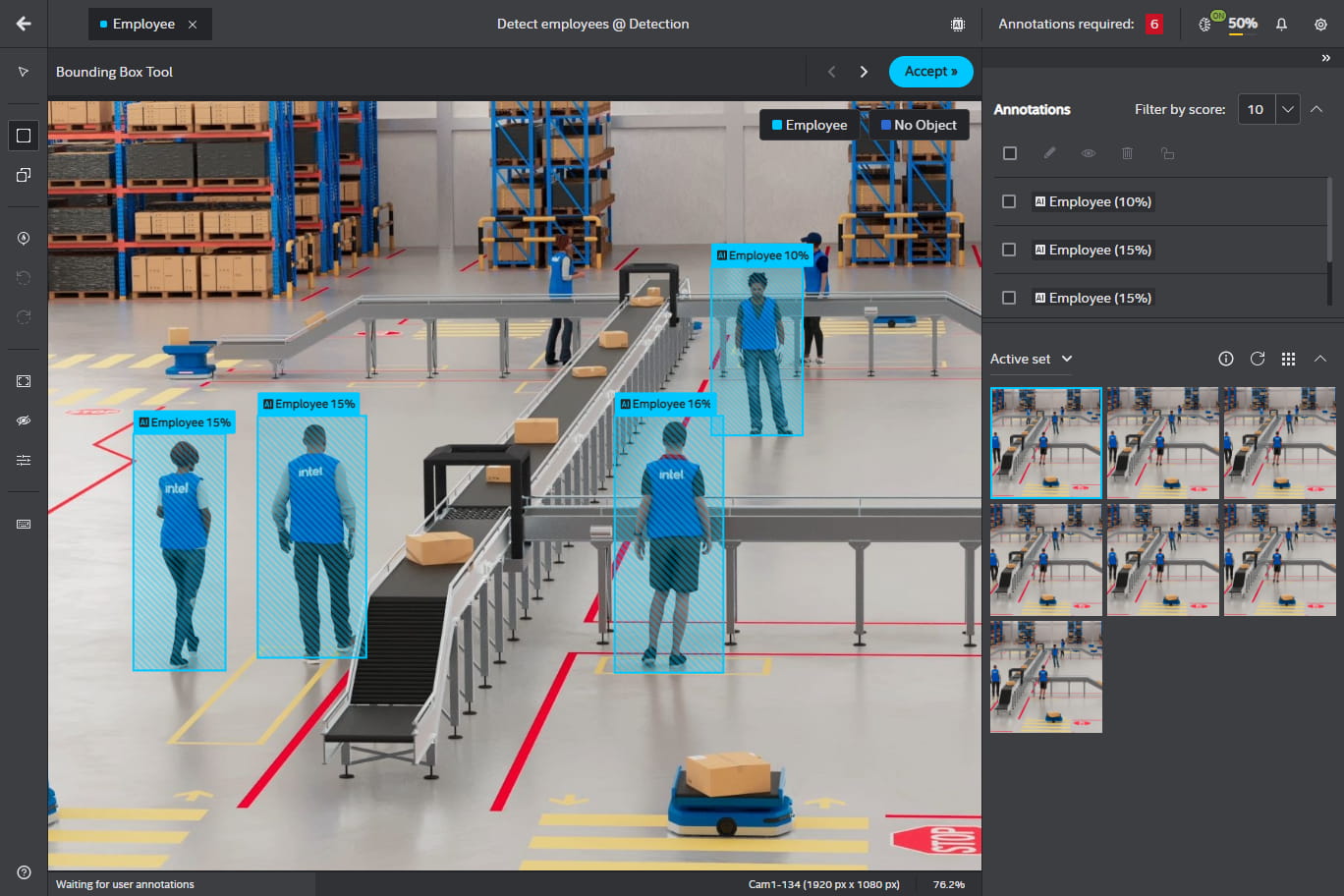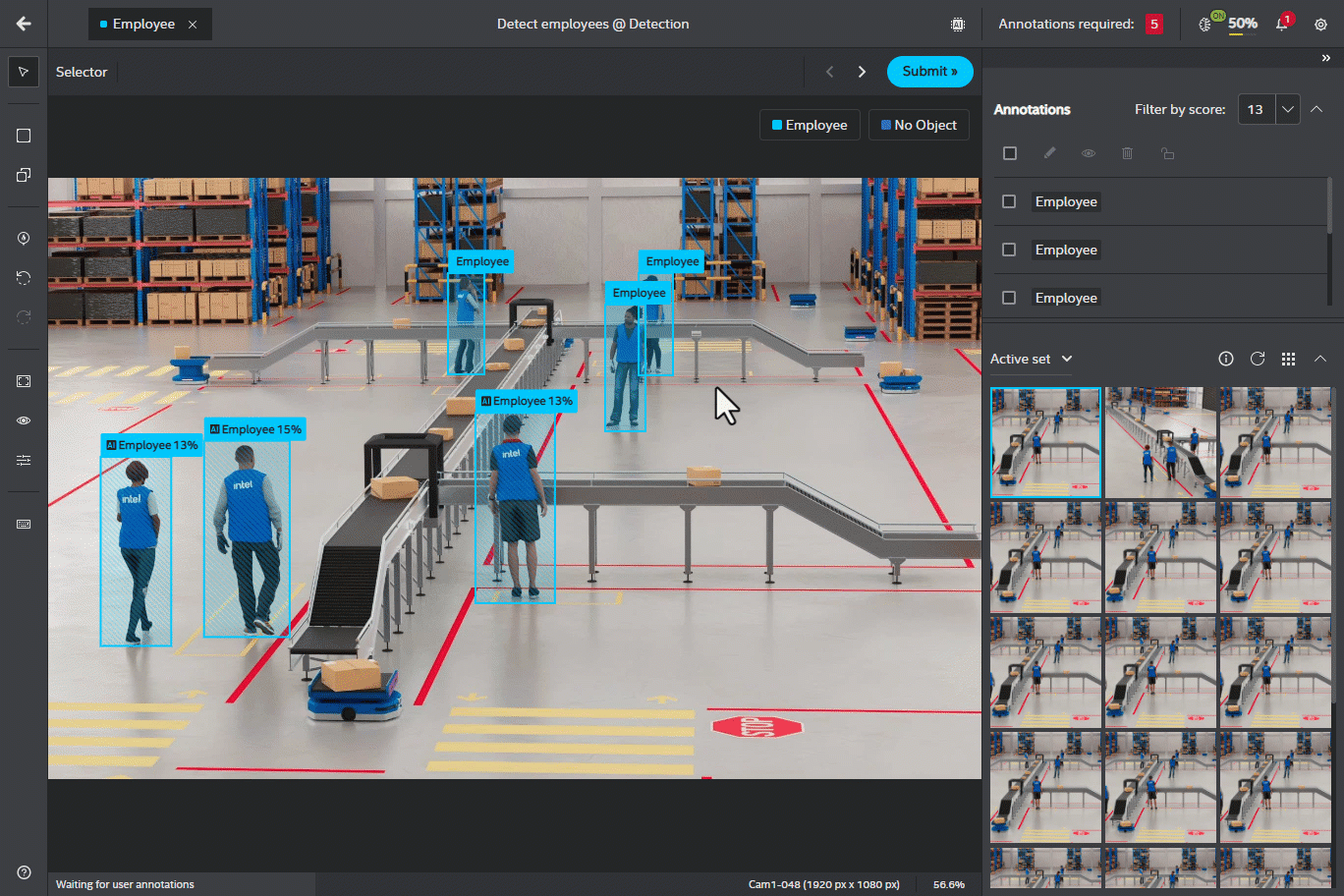Annotation Editor#
Knowing how to move around the annotation editor, learning all its capabilities and leveraging shortcuts will facilitate your annotation work. In this section, we will guide you through the annotation editor elements and describe the key concepts that drive annotation workflow.
Hint
Intel® Geti™ support for stylus
Annotating images is one of the functions of the Intel® Geti™ platform. The platform provides a user-friendly natural interface by using a stylus to enable users to directly draw on the image.
Key Concepts of the Annotation Workflow#
Active Learning#
The main strength of the Intel® Geti™ platform is in active learning. This is a process where the platform incrementally learns and actively suggests which images should be annotated next. By applying the current neural network to the images in the database, active learning selects which images it is least confident about to increase model’s predictions.
What this means for you, it that images will appear in a seemingly random order for you to annotate. This is exactly what the system is meant to do. To learn more about active learning, read our AI fundamentals section.
Annotations vs Predictions#
The Intel® Geti™ platform automatically draws annotations once the first round of training has finished. These annotations are called predictions since they are inferred from a model you created by annotating images.
Each prediction is AI labelled, so you will see the “AI” letters in the label name.
Annotation |
Prediction |
|---|---|

|

|
You can also open a Predictions vs Annotations dialog box by clicking on in the top menu bar.
You can see two tabs:
User Annotation mode - used for viewing annotations made by a user
AI Prediction mode - used for viewing annotations made by the system

User concurrency#
The Intel® Geti™ platform allows multiple users to annotate in a project concurrently. The system displays the name of the user who last annotated an item. If the user edits an existing annotation then the name of the latest editor appears on the annotation screen.